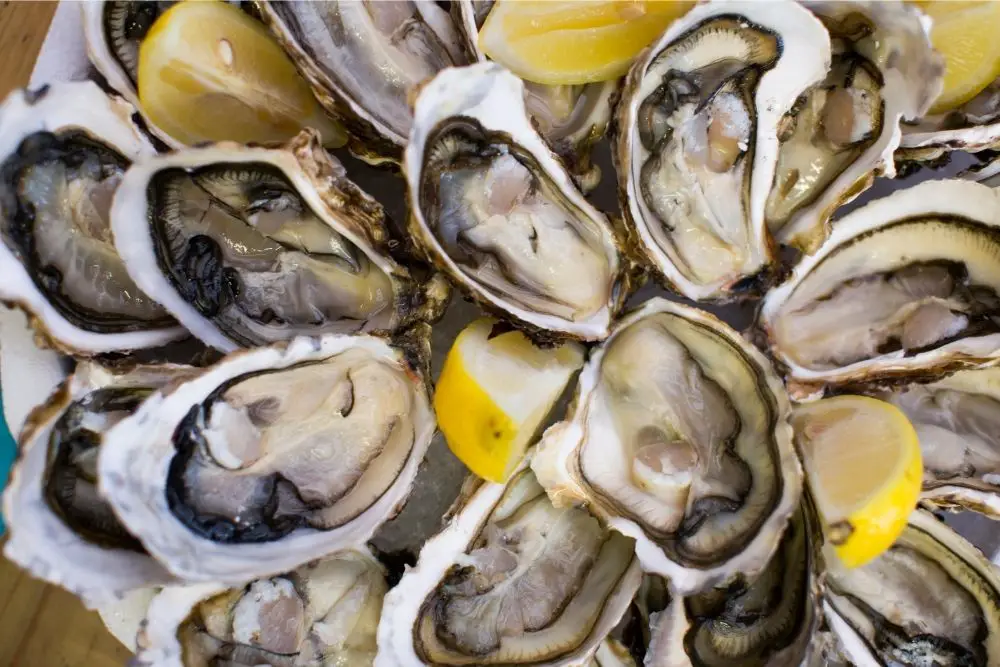Disclosure: Thank you for reading our articles! Some links may be affiliate links. We may get paid if you buy something or take an action after clicking one of these links. Additionally, as an Amazon Associate, I earn from qualifying purchases.
If you are an oyster lover then you have probably heard the tale that oysters should only be eaten in months that have an “R” in them. September, October, November, December, all the way to March.
The quick-minded among you might think that this is to do with the temperature and therefore the breeding pattern of an oyster, and you’re not wrong.
But the perceptive among you might notice that oysters tend to be in high-end restaurants all year round, and no one seems to get ill. You’re not wrong either.

There are two reasons for the legend and one of them is no longer relevant.
The tale of the “R” was created back when refrigeration technology wasn't as widespread as it is now, in fact, there wasn’t any refrigeration at all. Because oysters can spoil quickly, this means that they shouldn’t be touched at all in the summer.
But times had changed. We can chill as well as freeze the oysters until they are needed.
The second reason is still relevant today, and it’s to do with the oyster’s reproductive cycle. Oysters spawn when the water’s temperature is at its warmest.
Traditionally, oyster farmers would avoid fishing during this time to let the population grow, keeping a healthy stock for when the oysters were no longer spawning.
If you were to eat an oyster just after it had finished its reproductive cycle, you wouldn’t necessarily get ill, but because they had converted their glycogen into sperm and eggs, their structure would be different. The oyster would be soft and not as tasty.
So does that mean that the tale of only eating oysters in the months that have an “R” is still valid today? Well, the answer to that question is still both yes and no.
You know you should be getting a healthy and tasty oyster if you buy them in the fall, winter, and spring months, so the legend is still relevant there, but most modern-day oyster farmers keep their oysters in cold waters.
This allows the farmers to control the spawn rate and keeps their oysters firm and tasty.
The other thing to consider is the different types of oysters that you can get. Different breeds of oysters are tastier at different times of the year, especially when you consider that some places where oysters naturally gather are always hot.
When Are Gulf Oysters In Season?
Hot areas like the Gulf of Mexico constantly produce oysters because the temperature is so high. Gulf Oysters, as they are known, spawn all year round because of this warm water that they are surrounded by.
Because of this, Gulf Oysters have a different flavor to other oysters. They are fatty, watery, and soft. This is due to the natural glycogen process we talked about earlier.
These oysters are constantly reproducing, using up their glycogen to produce sperm and eggs. Overall the process makes Gulf Oyster less flavorful. But if you prefer the fatty texture and the delicate taste, then it should be music to your ears to know that Gulf Oysters are always in season.
They are constantly spawning, meaning that there is no healthy break to allow the population to rise and there is no perfect time to eat the half-shelled delicacy.
Although all oysters are now considered to be constantly in season, with the Gulf Oyster you don’t have to worry about when the best flavors will arrive on your plate, as they are the most constant type of oyster on the market.
When Are Oysters In Season In Louisiana?
Louisiana has strict regulations and rules around oysters and their season. These rules aren’t just for recreation oyster fishers but also commercial farmers too.
You can’t even harvest oysters at night (the Department of Wildlife and Fisheries considers the night to be one-half hour after sunset, until one-half hour before sunrise).
This is because Louisiana takes the conservation and continuation of oysters very seriously. If people overfish, then there will be no oysters left.
Biologists collect and record data from across the Louisiana coastline, so they can estimate how many oysters are in the area. They then use that data to determine the annual season for Louisiana oysters.
It changes every year due to the data collected, but normally Louisiana oysters are in season from the first Wednesday following Labor Day (in September), all the way through to April 30. Essentially following the “R” rule.
If you want to know the exact dates of the Louisiana oyster season for this year, then go to the official website for the Department of Wildlife and Fisheries, Louisiana.
When Are Oysters In Season In Texas?
Despite being a hot location, Texas does not have a year-long season for oysters. This is due to making sure that the oyster fishing areas are not overfished (just like Louisiana).
Texas also keeps to the “R” rule but tends to start their oyster season in November, cutting out September and October from the farming season. Recently, in the 2020-2021 season, lots of harvesting locations had to be shut down due to overfishing.
The areas were tested and found that there were not enough oysters of “legal size”, which meant that they were too small therefore too young. Without a proper-sized or properly-aged oyster, there would be a massive risk of losing oysters in these areas altogether.
Because Texas is trying to control its numbers and keep the oyster population going, we would recommend checking the Texas Parks and Wildlife Department for their oyster season, if you wanted to know the exact dates for the year.
